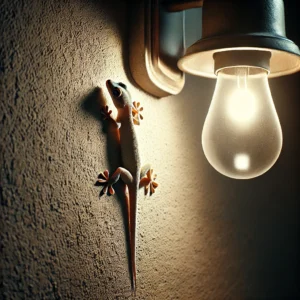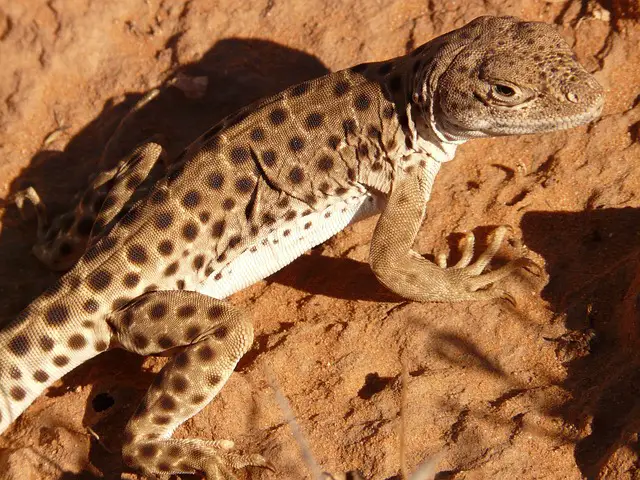Finding a lizard in your house can be a surprising experience. While they often slip in looking for food or warmth, lizards can cause damage or even spread diseases if not properly handled.
There are several reasons why a lizard may enter a house. Some species are attracted to buildings’ warmth and shelter, while others may search for prey or explore their surroundings. Regardless of the reason, knowing what to do is essential if you find a lizard in your home.
How to Identify Common House Lizards
It is common to find lizards in your house, especially in a warm climate. Lizards are usually harmless and can even be beneficial as they eat insects. However, if you are not comfortable with having lizards in your house, it is essential to identify them so that you can take appropriate action.
Several types of lizards can be found in houses, including geckos, anoles, skinks, and chameleons. Geckos are the most common type of lizard found in homes and are easily recognizable by their distinctive chirping sound.

Anoles are another common type of lizard found in houses, usually green or brown. Skinks are also common and have long, slender bodies with smooth scales. Chameleons are less common but can be identified by their ability to change color.

If you are unsure what type of lizard you have in your house, there are a few key features to look for. Lizards have long, slender bodies with scaly skin and four legs. They also have a long tail and can range in size from a few inches to several feet.
Another way to identify lizards is by their behavior. Lizards are typically active during the day and are often seen basking in the sun or hiding in crevices. They can also move quickly and can climb walls and ceilings.
If you are still unsure what type of lizard you have in your house, it is best to consult a professional. They can help you identify the lizard and provide advice on safely removing it from your home.
Why do Lizards Enter Your Home?
Lizards are common creatures found in almost every part of the world. They are known for their ability to adapt to different environments and can survive in nearly every condition. Lizards usually enter homes in search of food, shelter, or warmth.
Here are some reasons why lizards may enter your home:
- Food – Lizards are opportunistic feeders and will eat almost anything they can find. They are attracted to insects, spiders, and other small creatures that may be found in your home.
- Shelter – Lizards may seek shelter in your home to escape extreme weather conditions such as heat, cold, or rain. They may also hide in your home to avoid predators.
- Warmth – Lizards are cold-blooded creatures and need heat to regulate their body temperature. They may enter your home searching for warm places like near light fixtures or heating vents.
It is important to note that not all lizards are harmful or dangerous. Many species of lizards benefit the environment as they help control insect populations. However, if you have a lizard infestation in your home, contacting a pest control professional is the best to safely and effectively remove them.
Potential Problems with Lizards in Your House
While lizards may seem harmless, having them in your house can lead to several potential problems:
- Damage to Property – Lizards can chew wires and insulation, leading to property damage and in extreme cases, may cause electrical fires.
- Health Risks – Lizards may carry diseases like salmonella, which can cause food poisoning, and parasites like mites, which can irritate the skin..
- Unpleasant Odors – Lizards can produce a foul-smelling odor when they feel threatened or are under stress. This can make your home smell unpleasant and may be challenging to get rid of.
- Potential Infestations – If you have one lizard in your house, there likely are more. Lizards can lay eggs and create nests in your home, leading to a potential infestation that can be difficult to control.
Overall, it is essential to prevent lizards from entering your home and remove them if they do. This can help to avoid potential problems and keep your home safe and healthy.
How to Remove a Lizard from Your House
When removing lizards from your home, you can do a few things to make the process easier and more effective. Here are some tips:
- Use a trap – Various types of traps are available in the market that can help you catch the lizard. A popular traps is the glue trap*. You can place the trap in areas where you have seen the lizard and wait for it to get caught. Once trapped, carefully remove the trap and release the lizard outside. Alternative glue trap*
* As an Amazon affiliate, we may earn a commission from qualifying purchases.
- Use a broom – If you see a lizard on the wall, you can gently sweep it off the wall and onto the floor. Once on the floor, you can use a container to trap the lizard and release it outside.
- Container and cardboard – Place a transparent plastic container, box, or cup gently over the lizard. Slide a piece of sturdy cardboard, or a magazine under the container. Once the lizard is inside, carefully carry it outside and release it away from your home.
- Towel or cloth – Take a soft towel or cloth and gently drape it over the lizard. The dark covering will often calm it down. Once the lizard is still, carefully scoop it up with the towel. Transport it outside and let it go.
- Cardboard funnel – Roll a piece of cardboard into a cone shape with a large opening on one end and a smaller opening on the other. Place the larger end near the lizard’s hiding spot. Gently nudge the lizard toward the funnel, guiding it into a container where it can be captured safely.
- Gentle Light or Heat Guidance – Turn off all the lights in the room. Open a door or window and shine a flashlight or place a warm light outside the exit. The lizard may be drawn toward the warmth and light, making it easier to guide out. This is a completely hands-off approach that lets the lizard leave on its own terms.
To prevent lizards from entering your home, you can seal all entry points. This includes gaps in doors and windows, cracks in walls, and holes in the ceiling. By doing so, you can minimize the risk of lizards entering your home.
Lizards are attracted to insects, so keeping your home clean and free of insects can help prevent lizards from entering your home. Make sure to clean up any spills or crumbs, and keep your kitchen and dining area clean.
How to prevent a lizard from entering your home
Lizards are often attracted to homes due to the availability of food and shelter.
However, there are several measures you can take to prevent them from entering your home. Firstly, seal off any cracks or gaps in your walls, doors, and windows.
Lizards can fit through tiny openings, so it’s essential to be thorough.
You can seal these gaps using caulking, weather stripping, or mesh screens.
Secondly, keep your home clean and free of clutter. Lizards are attracted to insects, so reducing the number of insects in your home can help to deter lizards.
Keep your kitchen and dining areas clean and dispose of food waste promptly. Thirdly, keep your yard and garden well-maintained.
Lizards often hide in tall grass and overgrown plants, so keeping your yard trimmed and tidy can help to reduce the number of lizards in your area.
Additionally, you can use natural repellents such as mothballs or essential oils to deter lizards. However, it’s important to note that these methods may not be effective for all lizards.
By taking these preventative measures, you can reduce the likelihood of lizards entering your home and minimize any potential damage or inconvenience they may cause.
Conclusion
While having a lizard in your house may seem alarming, it is essential to remember that they are generally harmless and can even be beneficial in controlling insect populations. If you find a lizard in your home, it is best to remain calm and gently guide it back outside using a broom or other tool.
It is also essential to prevent lizards from entering your home in the first place, such as sealing any cracks or gaps in doors or windows and keeping doors closed when possible.
Suppose you are concerned about lizards in your home or are experiencing an infestation. In that case, consulting with a pest control professional who can offer guidance on safe and effective removal methods may be helpful.




